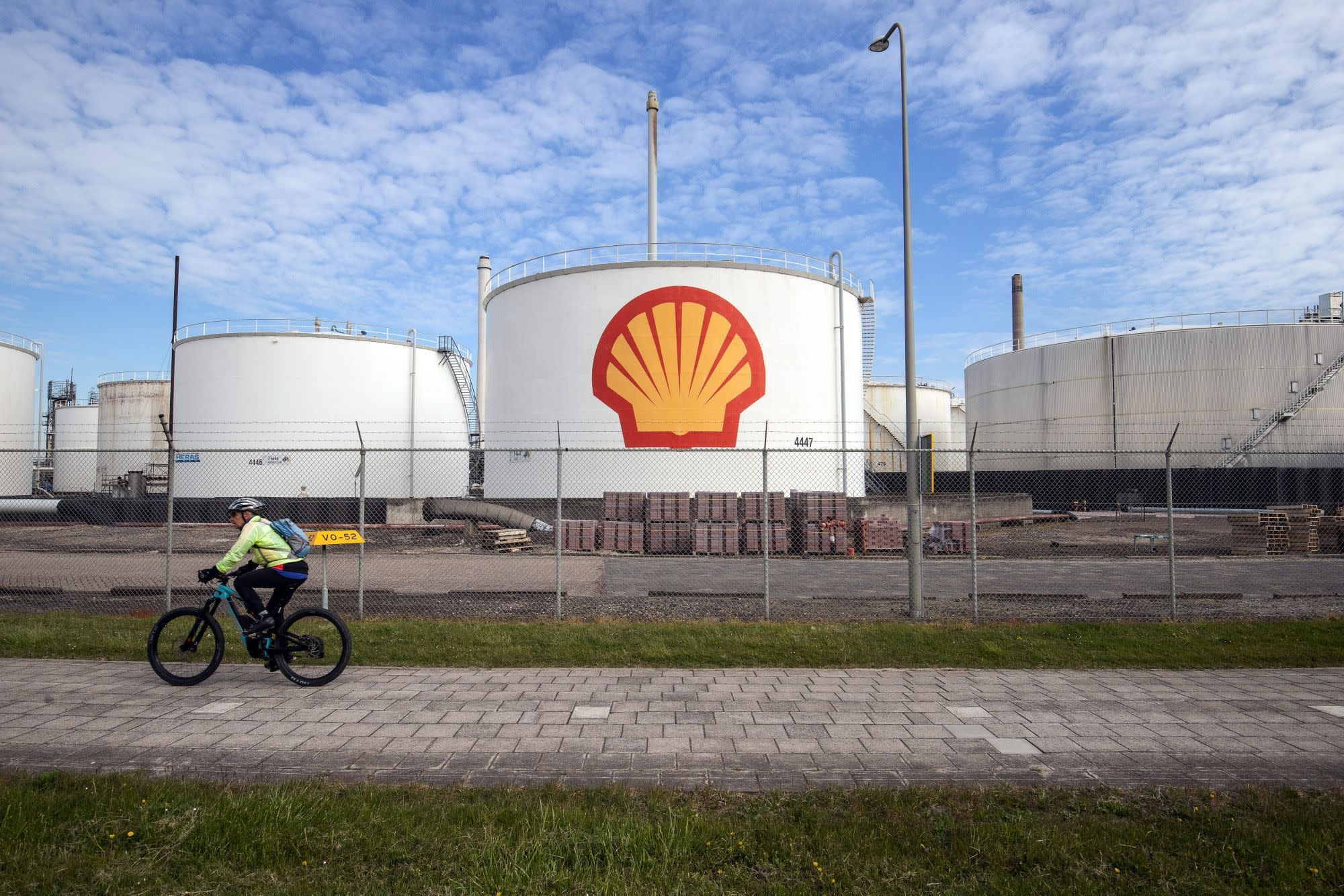Shell Makes Amends With Investors by Promising Higher Returns

(Bloomberg) —
Royal Dutch Shell Plc promised to make further amends with investors for last year’s historic dividend cut by boosting returns.
The pledge, which comes as the company will also keep paying down debt, shows how the oil and gas industry is getting stronger thanks to a recovery in energy demand and rising prices.
The Anglo-Dutch giant will raise total distributions to shareholders to between 20% and 30% of cash flow from its operations, starting when it announces second-quarter results on July 29, the company said in a statement on Wednesday.
If oil remains at about $75 a barrel, JPMorgan Chase & Co. said it expects Shell to repurchase about $500 million of shares in the third quarter. The company didn’t specify whether the increased distributions would take the form of dividends or buybacks.
The increase in Shell’s returns “sends an important message to the market,” JPMorgan analysts including Christyan Malek wrote in a note. The company’s B shares rose 2.4% to 1,456 pence as of 10:48 a.m. in London.
The economic recovery from Covid-19 has transformed the fortunes of oil producers, from the international majors to U.S. shale drillers and OPEC members. U.S. crude futures hit a six-year high close to $77 a barrel on Wednesday, driven by rising demand and constrained supply.
That’s given Shell more leeway to woo investors after slashing its payout by two thirds last year. The company has promised growing dividends, a stronger balance sheet and a plan to gradually transform itself for a low-carbon future.
While shareholders will start seeing more money in their pockets, Shell said it will keep a lid on spending, with capital expenditure remaining below $22 billion for the year.
The expected reduction in net-debt could be tempered by changes in working capital, which saw a large build in the first quarter of the year, the company said. JPMorgan expects Shell to end the year with net-debt of $57 billion.
Shell’s trading arm, which at times can be a large source of earnings, are expected to perform “significantly below average” for integrated gas in the second quarter, and at average levels for oil. The divisions have so far this year failed to replicate the successes of 2020, which saw oil trading almost double its profits to $2.6 billion, even as other parts of the company were scarred by the effects of the coronavirus.
Gas liquefaction is expected to be in the range of 7.1 million and 7.7 million tons due to additional unplanned maintenance. The company sees chemicals margins in line with the first quarter.
(A previous version of this story corrected the net-debt level in the third paragraph.)
More stories like this are available on bloomberg.com
Subscribe now to stay ahead with the most trusted business news source.
©2021 Bloomberg L.P.




